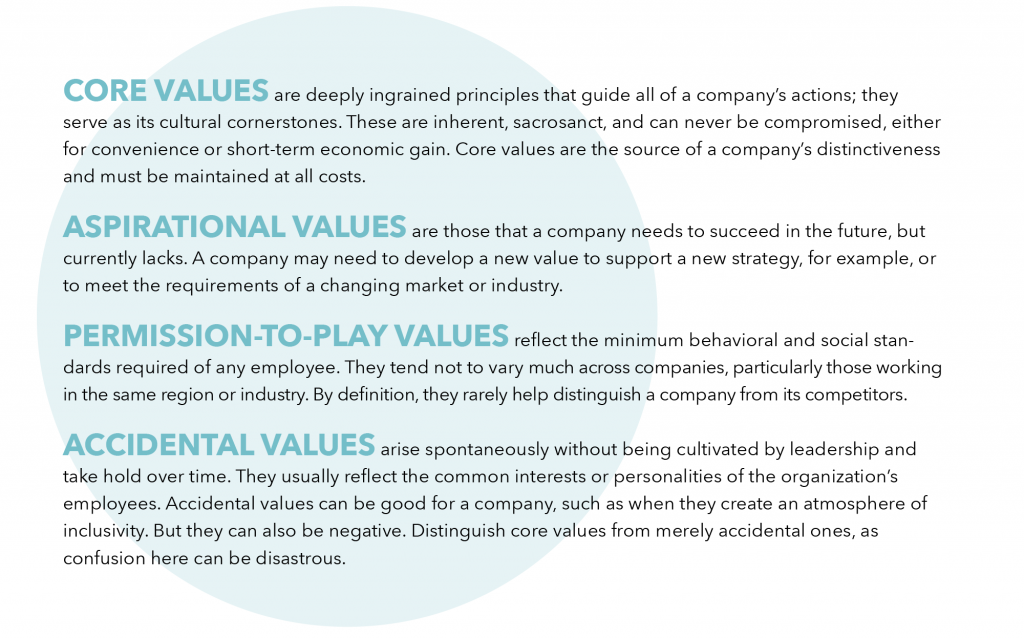
Branding impacts more than sales and marketing initiatives. It is also a powerful influence on a company’s internal culture, and can dramatically impact how your employees think and behave.
“Culture” is an umbrella term that encompasses social behavior and norms, as well as the knowledge, beliefs, arts, laws, customs, capabilities and habits of individuals. We acquire culture through learning; by being taught or influenced. It doesn’t happen spontaneously.
Fortunately, businesses are finally recognizing that a strong culture is key to a great workplace. Healthy company cultures lead to motivated, efficient personnel and overall clarity of vision. A well-crafted brand can be the catalyst for your company’s culture — and when released in the right environment, the results are transformational.

> Your Brand is Brewing
The process of fermentation has been used for over 90 centuries across countless civilizations. By introducing a starter culture (also commonly referred to as a “mother”) to certain foods, they can be converted into something wonderful. Even today, fermentation still produces many of the most important—and desirable—foodstuffs worldwide, including:
![]()
Different starter cultures catalyze different chemical reactions, resulting in unlimited varieties of fermented food and beverages — each with a distinctive flavor profile. There’s a transformation that produces another, more desirable outcome. Similarly, brands act as the “mother” when it comes to fermenting company culture. When your brand is ingrained across all of your company’s operations, it can produce delicious results that attract the right people to your team. It can also repel people who don’t have the same taste, helping sort out people who just don’t fit.
To catalyze the right kind of culture, you first need to have a powerful understanding of your brand’s values. It’s an important effort that requires special attention.
> Values. Brands. Culture.
Authentic brands are founded upon honest values. Consumers can sense inauthenticity from a mile away, and are repelled by it. In his Harvard Business Review essay Make Your Values Mean Something, business management author Patrick M. Lencioni (The Five Dysfunctions of a Team) explains that “Most value statements are bland, toothless, or just plain dishonest. And far from being harmless, they’re often highly destructive. Empty values statements create cynical and dispirited employees, alienate customers, and undermine managerial credibility.”
In his article, Lencioni outlines four types of values. Understanding these can help you with shaping more meaningful values — ones that can be used to create a potent brand culture starter.

Out of all these, core values are what truly great brands are based on. They represent the fundamental beliefs that must be shared by all people in your organization. When wrapped with the context and visual language of branding, core values present a real opportunity for cultural transformation.
> The Culture Code
But how do we begin to transform our culture? The Culture Code, by Clotaire Rapaille, provides strong insights into how brands operate culturally — and how changes to this need to start at a fundamental level.
Rapaille suggests that brands rely on “imprint” experiences that are so deeply felt, emotionally, that they trigger unconscious reactions. This is why products must be positioned to appeal to local cultural norms, rather than relying on universal beliefs. Coffee, for instance, is perceived differently in Asia than in Europe, and must be marketed accordingly.
Likewise, your brand provides a way to imprint your values. By leveraging the intelligence of a well-crafted brand, there’s a consistent and reliable process to influencing culture. You are not just shaping the minds and opinions of consumers with your brand. You are shaping yourselves, too, every single day.
> Keeping Culture Alive
When it comes to fermentation, the starter “mother” is just that — a starter. The environment must be suitable for the culture to thrive, or else your efforts might be in vain. Keep your attention focused on four concepts that provide the right climate for your culture, all of which have parallels in the fermentation process.
Temperature:
Think of your brand as a living organism. If it gets too hot or too cold, it could perish. Similarly, check on the health of your organization regularly to see if it needs to be (metaphorically) heated up or cooled down. Is everything working? Do adjustments need to be made?
Mix:
Great results come from the right mix of ingredients. Make sure that you have the right people at the table, representing all departments of the company. If everybody has a voice, spreading culture becomes a ground-up collaboration, and not a command from on high.
Time:
Fermentation can take days, weeks, or even months before achieving perfection. Be realistic about how long it will take to achieve your cultural goals. Don’t give up at every set back. Stick with what’s working, and adjust for unexpected challenges. On the flipside, don’t take too long or you run the risk of spoiling.
Protection:
A small fleck of contamination can ruin the whole batch. Toxins are extremely dangerous, and could undo all your hard work. Observe any potential threats and shield your culture, especially when it’s young. If poison does get inside, confront it ASAP before it infects everything.
Branding can start a cultural revolution. However, the proper conditions need to be maintained to ensure it will thrive. There must be buy-in across the whole enterprise, but it starts at the top. When great brands influence corporate culture, and simultaneously resonate in the minds of customers, a recipe for legendary results has been crafted.
> Is Your Culture Alive?
Drop us a note to tell us all about it.